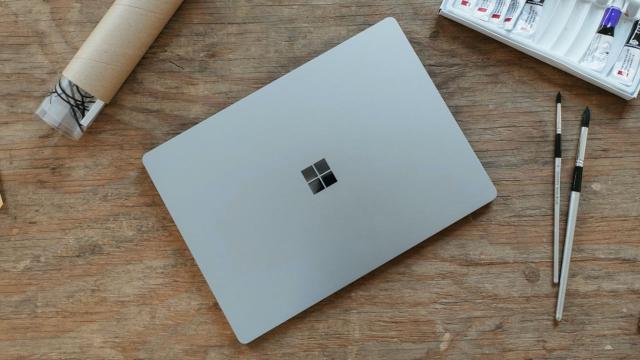Most of the time, you’re going to want to use your laptop when it’s opened up: You’ve got full access to the keyboard and the trackpad as your input devices, as well as the attached display, which may or may not come with touchscreen capabilities.
When you’re at home or at the office, however, you might want to dock your laptop to a separate monitor, keyboard, and mouse—it potentially means you’ve got more screen space to work with and a larger keyboard to tap away at, and it might well help with your posture while you’re at your desk, as well.
However, to use your laptop like this and in lid-closed mode, you’re going to have to tweak some settings—otherwise your laptop will assume it’s no longer needed and put itself to sleep when you close the lid.
To begin with, get all of your various peripherals connected to your laptop: On both Windows and macOS, devices like keyboards, mice, and monitors should be detected straight away, and automatically start working, so you can close down the lid of your laptop when you’re ready.
Windows settings

Make sure your laptop is set to do nothing when the lid shuts. Credit: Lifehacker
If you’re working with a Windows laptop, this is one of those times when you need to delve into the old Control Panel to get the operating system to work the way you want it to. At the time of writing, the relevant options haven’t been migrated over to the modern Settings panel, so search for “Control Panel” from the taskbar and then launch it.
Choose Hardware and Sound, then Power Options, and then Choose what closing the lid does (on the left). You’ll see two options next to the When I close the lid heading: One for when your laptop is running on battery power, and one for when your laptop is plugged in. One or both of these options need to be set to Do nothing for you to be able to use your laptop with the lid shut. Click Save changes to confirm.
When it comes to getting your external display working properly, you can access these options from the normal Settings pane, accessed through the Start menu or by pressing Win+I on the keyboard. Choose System and then Display, and from the next screen you can make sure the external monitor is enabled and set to the right resolution.
macOS settings

You can tell macOS not to go to sleep when the lid is shut. Credit: Lifehacker
If you’re using a MacBook that you’ve connected to an external display and a separate keyboard and mouse (or trackpad), the latest versions of macOS should recognize this and act accordingly: You may see the external monitor briefly flash and refresh when you close the lid, but otherwise you should be able to just carry on using your laptop, assuming the second display and the peripherals have been detected.
If you open up the Apple menu, then pick System Settings and then Battery and Options, you’ll find a toggle switch labeled Prevent automatic sleeping on power adapter when the display is off. If you enable this, closing the lid of your macOS laptop won’t put it to sleep, as long as it’s connected to power—this is handy if, for example, you want current downloads to continue but you don’t have accessories attached.
From System Settings you can also choose Displays to configure the external display that you’ve connected to your MacBook, to use while it’s shut. You’re able to set the resolution, the orientation, and the color configuration of the second screen, while some monitors also let you adjust the refresh rate too.

Leave a Reply
You must be logged in to post a comment.